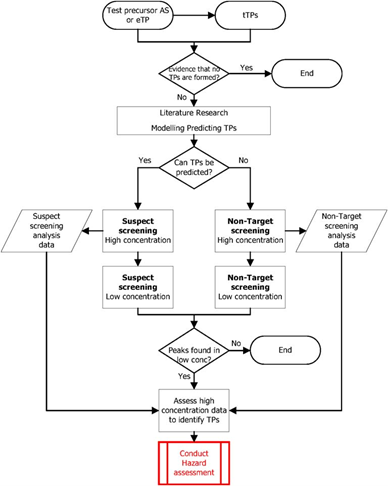Environmental Fate Studies
Experts in determining the pathways of active ingredient distribution in the environment through environmental fate studies for conventional and biological agrochemicals.
-(1).jpg?ext=.jpg)
Summary: Risk assessment studies recommended by the guidance will enable registrants to better assess and manage the risk resulting from potential transformation products of PPPs and biocides entering drinking water production or abstraction systems. This assessment is vital to ensure public health while continuing to offer options that can help with sustainable crop protection.
EFSA recently issued a guidance document on the impact of water treatment processes on residues of active substances (AS) or their metabolites in water abstracted for drinking water production. The guidance covers the identification and toxicity assessment of transformation products (TPs), in silico methods for hazard prediction, read-across approach, etc. The original draft was published for public comments in October 2022, adopted on July 14, 2023, and published in the EFSA Journal on 28 August 2023 (EFSA Journal 2023;21(8):8194).
The guidance applies to the Biocidal Products and Plant Protection Products (PPP) Regulations and addresses the need to assess PPP and biocidal AS and their metabolites for their potential to form TPs during drinking water production. The impact of drinking water treatment processes on PPP and biocidal AS may result in potentially harmful TPs, which must be evaluated further.
Drinking water treatment processes include (1) Chlorination with sodium hypochlorite or chlorine, (2) chlorination with chloramine, (3) pre-oxidation with chlorine dioxide, (4) the combination of pre-oxidation with chlorine dioxide and chlorination with sodium hypochlorite, chlorine, or chloramine, (5) ozonation, (6) ultraviolet (UV) disinfection, and (7) rapid filtration over sand or granular activated carbon.
The guidance gives basic methodology but doesn’t stipulate how to conduct these simulation experiments in the laboratories but focuses on water treatment methods commonly used in the European Union (EU). In a typical EU water treatment plant, these processes are performed together, or sequentially. However, it appears that the expectation is for these processes to be conducted separately in laboratory beakers (or jar testing equipment) and identify any potential TP after each process by non-target screening.
It is proposed that the experiments be performed following a two-step approach. First, the experiments are to be performed at relatively high concentrations (about 1,000X the limit of quantification (LOQ) of the parent active substance or its metabolites) to facilitate the detection of possible TPs. Then, the experiments will be repeated at a lower concentration that may be observed in the environment (typically around 1–10 μg/L). If TPs are still observed at low concentrations in significant amounts (> 0.075 μg/L), the high-concentration experiments' results should be used to identify the relevant TPs. No further risk assessment is needed if the assessment shows no TPs are formed.
The guidance focuses on the performance of experiments simulating various drinking water treatment processes using the active substance of concern and the experimental non-target identification of potential TPs resulting from the drinking water treatment processes (not on whether TPs are formed, but on their properties and concentrations). One of the regulators’ major concerns is the potential formation of nitrosamines and chlorinated TPs in chlorination processes.
Drinking water simulation experiments can easily be performed in the laboratory using appropriate equipment and procedures. The challenging part is the non-target identification of potential TPs by LC-MS/MS or other structure elucidation techniques.
The evaluation of the risk these TPs may present (or pose) follows the typical hazard assessment performed for any TPs observed in any typical environmental fate exposure guideline study. The procedures required for this hazard assessment are schematically summarized in a tiered approach below. Both hazard and risk assessments must be carried out for all TPs identified in the experiments.

Regulatory requirements regarding the impact of water treatment processes on AS and their metabolites in drinking water production are complex. Even though certain processes are usually performed together in EU facilities, a reasonable compromise would be an expectation to perform these processes sequentially, mimicking a typical EU water treatment plant to generate potential TPs that will be expected in real environmental scenarios.
The guidance established by EFSA offers a broad framework for navigating these regulatory requirements but does not specify how laboratory experimentation should be conducted. Smithers is here to help registrants who find themselves faced with this intricacy; we are currently preparing to partner with you to design and perform these experiments and conduct the non-target identification of potential TPs using our state-of-the-art equipment and wealth of experience with identification of unknown transformation products. Contact Dr. Malekani to discuss the next steps in planning your testing strategy.